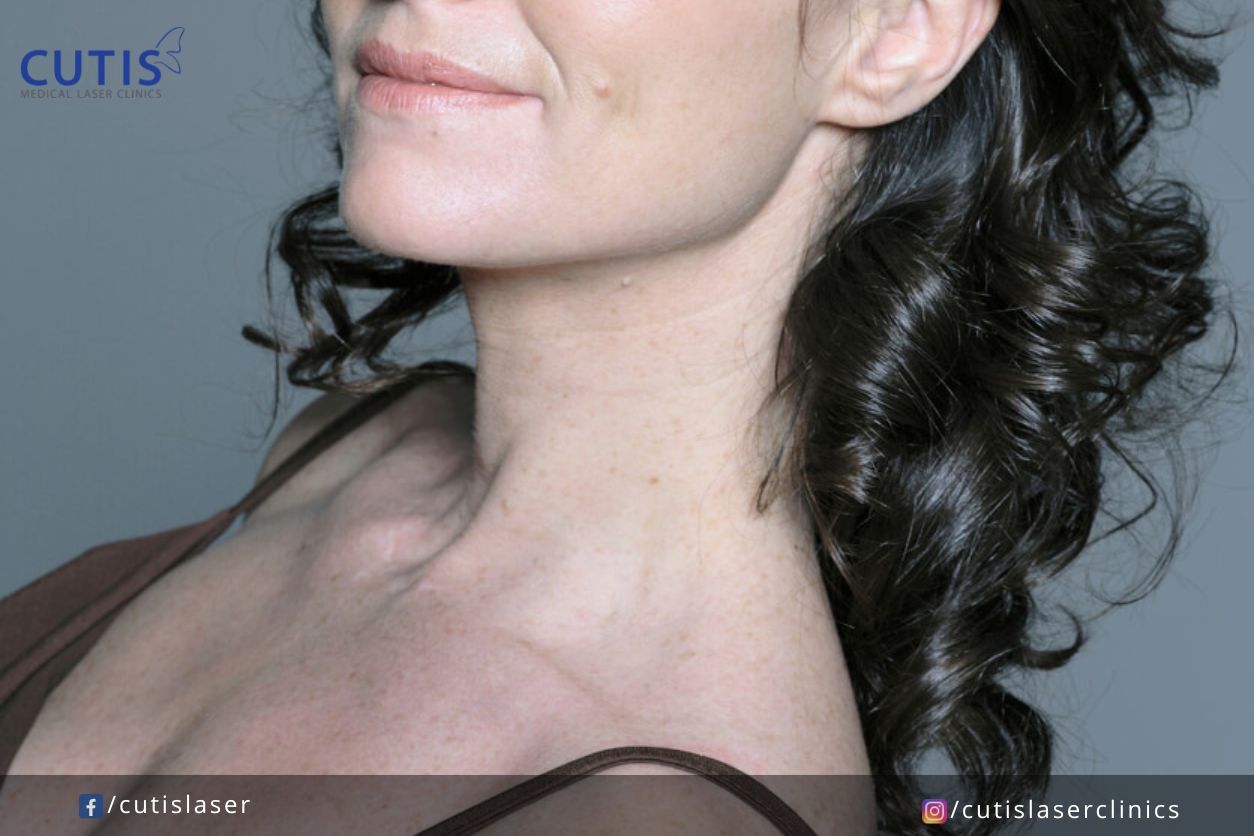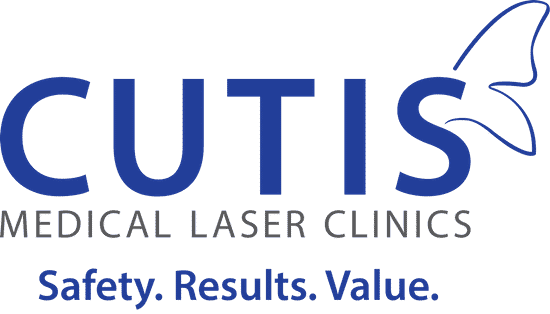Fine lines and wrinkles don’t just occur on the upper part of the face. While these are the ones that people are more concerned about, these pesky lines and creases can also appear on the upper chest. They can betray or even reveal your age, especially if your neck and chest look different or older than your face.
Chest wrinkles do not pose a health risk, but they can sometimes make you feel self-conscious or prevent you from wearing certain clothes, especially those that expose the upper neck and chest area. This only makes it important to protect this area from some of the causes of wrinkles and learn what you can do to treat or improve them.

What exactly are chest wrinkles?
Also referred to as décolletage wrinkles or cleavage rhytides, chest wrinkles are lines or creases that show up on the upper chest below the neck. They can develop due to aging, certain body positions (like sleeping on the side), and other extrinsic factors like sun exposure.
The neck and chest are susceptible to wrinkling and aging because they produce less sebum and have less collagen on your face. They also receive just as much UV exposure as the face, but are often overlooked when applying sunscreen and other skin care products.
What can cause chest wrinkles?
Like other wrinkles in the body, the formation of chest wrinkles is associated with the breakdown of essential skin proteins that comes with age. The production of collagen and elastin declines as you age, which can then make the skin drier, thinner, and less elastin. This can then result in the formation of fine lines and wrinkles.
Other factors that can cause chest wrinkles include:
- Sun exposure – Prolonged and unprotected sun exposure accelerates the aging process, as well as the breakdown of collagen and elastin fibers. It can damage the skin and cause wrinkling, as well as make existing wrinkles and dark spots more prominent.
- Genetics – This plays a big role in determining your skin texture and structure, as well as the breakdown of the collagen and elastin in your body. If chest wrinkles, for instance, are common in your family, you are more likely to have them.
- Weight changes – Losing a significant amount of weight can cause sagging skin and wrinkles. When you gain weight, your skin stretches, including the collagen and elastin in it. And while you may be able to lose that extra fat beneath your skin, the protein fibers do not always shrink back. This may then result in wrinkling.
- Side sleeping – Frequently sleeping on the same side puts you at an increased risk of developing chest wrinkles. This is particularly true for those with larger breasts due to them hanging over in one direction for several hours. Gravity can contribute to vertical chest wrinkles over time.
- Ill-fitting undergarment – When bras and shapewear fit improperly, crush the breasts down, and don’t provide ample support, you may see chest wrinkles over time. This makes it important to get proper fitting underwear to support your breasts and prevent damage to collagen and elastin.
- Smoking – This habit exposes the skin to free radicals that damage or speed up the breakdown of collagen and elastin. Smoking also reduces blood flow and the level of oxygen and nutrients delivered to the skin, affecting collagen synthesis, cell turnover, and other repair processes. This can lead to premature skin aging and wrinkling.
What can help improve or treat chest wrinkles?
Chest wrinkles are a normal part of aging, but it is also understandable why you may want to avoid or get rid of them. Here are a few things that may prevent or delay their formation, as well as treat or improve existing chest wrinkles
- Prioritize sun protection – Always wear broad-spectrum sunscreen daily regardless of the weather. It is also advisable to limit sun exposure, particularly during peak hours or when the UV rays are the strongest—between 10 am to 4 pm.
- Extend skincare to your neck and chest – Don’t neglect your neck and upper chest area when applying skincare products. These include moisturizers, sunscreens, and other anti-aging serums. You can also use a product specifically formulated for the neck area, like Dr. Sylvia’s 24k Gold Neck Protect.
- Exfoliate once a week – When doing so, make sure to avoid abrasives or physical exfoliants that may cause micro-tears in the neck or chest’s delicate skin. Consider products with mild alpha-hydroxy acids (AHAs) like peels or toners with glycolic, lactic, or mandelic acid.
- Cleanse and moisturize daily – Take better care of your neck and chest by cleansing and moisturizing them daily. Use a mild or gentle cleanser to remove oil, dirt, and makeup that may have built up on these areas, and make sure to moisturize after or use a firming neck cream with SPF.
- Consider MFU-V – Micro focused ultrasound with visualization (MFU-V) is US FDA-cleared for non-invasively lifting the skin on the face, brow, neck, and under the chin. It delivers time-tested ultrasound energy into the specific layers to stimulate collagen production. There is also the use of real-time visualization to see the areas being targeted and effectively deliver ultrasound energy into the right layers.
You can turn to MFU-V to:
- Lift and tighten mild to moderate skin laxity
- Treat the neck, chin, chest, and a low brow line
- Improve lines and wrinkles on the upper chest
- Contour or have a more defined facial profile
- Extend the effects of a surgical facelift
Don’t let chest wrinkles compromise your confidence. Contact Cutis Medical Laser Clinics in Singapore today and schedule a consultation with our aesthetic doctor to learn more about MFU-V and our clinic’s non-surgical anti-aging procedures.
- If you would like to be an informed patient, please contact us at +65-6801-4000 or
cutis@cutislaserclinics.com. - Cutis Medical Laser Clinics, 9 Scotts Road Pacific Plaza, Scotts Medical Center #08-07, Singapore – 228210
+65-6801-4000 - cutis@cutislaserclinics.com
